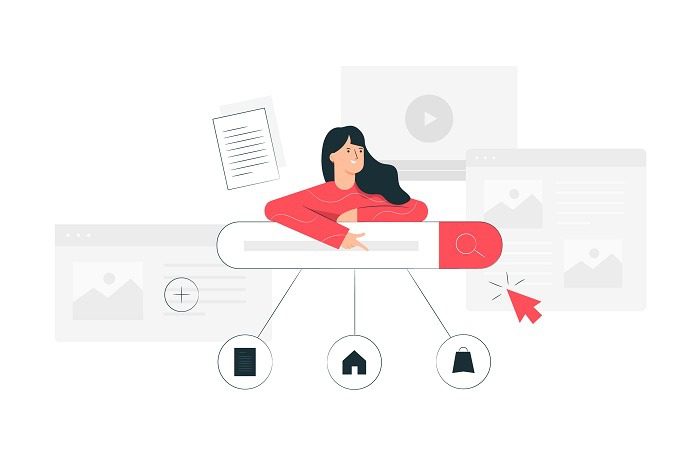
Having a blog is great news for your business. It keeps your content fresh and up to date. It provides great material for social media and enables you to promote yourself as an industry leader. Most importantly, it brings people to your business, which means more potential leads for you.
Want more traffic to your blog? SEO is your answer.
For those of you who are new to this, SEO stands for Search Engine Optimisation. It’s what helps your website rank and can be found by customers on search engines like Google.
If you want to know more, you can discover what exactly SEO is and how it works here.
Right, ready to move on with the good stuff?
5 Tips to Triple your Blog’s Traffic.
1. Always produce high-quality content
The number one tip has to be about your content.
It goes without saying that you simply can’t have a blog without content. But if you want to up your SEO, you need to make sure you’re producing high-quality content that your customers will really value.
These are the types of websites that search engines are looking for. If your blog does it, they’ll reward you by putting your blog higher in the rankings.
Not sure what makes good content? Try answering some of the most common questions that you get asked by your customers – or creating step-by-step guides on how to solve common problems that they might be facing.
If you’re looking for inspiration, look at common search terms around your keywords. These might provide valuable insight into the questions your customers have.
Read more: Content Writing: A Step by Step Guide for 2023
2. Add links to your blogs
Links are great as an SEO tactic to boost your traffic.
Generally, there are three types of links that you can include on your blog. These are:
- Internal links. These link to pages on your own website and could be used to link your users to a particular product that’s mentioned in the blog, or even to another post to keep them engaged in your blog.
- External links. These link to another website that’s not your own. Although it may seem like a bad idea to take your users away from the website, it actually builds credibility to link to reputable sources (particularly if you’re using statistics!) and is great for your SEO. If you want to minimize the risk of taking your visitors away, you can set these links to always open in a new window.
- Backlinks. These are when other websites link to yours and are arguably the most important link for your SEO. This is because the more credible websites that link to you, the more search engines will believe that you are the industry leader, moving your website through the rankings.
Read more: 15 Ways To Get More Backlinks and Boost Your SERP Ranking
Internal and external links are relatively easy to implement into your blog posts, but remember to incorporate them in naturally as possible, otherwise, it may look like spam.
Also, don’t just link everything on the words ‘click here’. Try and link on keywords that are relevant to the link it’s going to.
Backlinks can be harder to get, but they’re not impossible.
Guest writing posts on other blogs or PR releases are a great way to build up your backlinks while you create relationships with other professionals in your industry.
3. Optimising your URLs
Let’s make this clear. URLs that look like this:
www.exampleblog.com/dhia/fue/38261/103
Make absolutely no sense. If you take a look at that URL, you have no idea what you can expect on that page.
Unfortunately, neither can search engines. This makes your post harder to categorize, which will damage your rankings.
So, make sure you always use clear and relevant URLs, like this:
www.exampleblog.com/blog/using-clear-URLS
This is a much clearer URL that tells your customers (and SEO robots) what the page is about right from the start.
If possible, you can also try to get your keywords in the URL for an added SEO boost. Just be careful though. Don’t make them too long or confusing to understand.
4. Improve your page speed
Google has cited page speed as an important factor for ranking websites.
So if your blog has a fast loading time, you’re more likely to find your website higher up on search engine rankings.
Generally, this is something that your website needs anyway. Users just aren’t prepared to wait for slow websites anymore.
On average, 40% of users will abandon a website if it takes more than 3 seconds to load.
3 seconds. That’s it.
Users just aren’t prepared to wait anymore. If you want them on your blog, don’t make them wait for it.
Read more: 7 Tips To Speed Up Your WordPress Website’s Performance
5. Revisit and update old posts
When you need an SEO boost it’s useful to revisit your old content.
This gives you a good opportunity to:
- Revisit the old links you’ve used, making sure they all still work and are relevant.
- Add new, relevant links throughout the post.
- Remove any outdated inaccuracies or errors that have changed over time.
Removing any inaccuracies doesn’t mean you have to rewrite the whole thing. If you made a post back in 2012 and talked about statistics for that year, you don’t need to suddenly rewrite it to be accurate for this year.
This is more about your business or products. Let’s say you wrote in a clothing article that you don’t provide scarves, but then added it to your products several months later. If anyone lands on that old post, they’ll still think you don’t offer this product – and lose you a potential lead.
Read more: SEO Best Practices for Improving Underperforming Content
Let’s recap: the SEO tactics you need to know
To make sure your blog is ranked higher on search engines, our top tips are to:
- Produce great, high-quality content
- Create lots of relevant links within your posts
- Create clear and obvious URLs
- Ensure your blog has a quick loading speed
- Revisit old content to get the best performance
Just remember, that like any SEO tactic, it may take time before you can see the rewards.
But if you stick to these tactics, you will notice a difference. They’re proven to work and have increased blog traffic by up to 3 times as much.
Just think about what that new traffic could do for your website.








